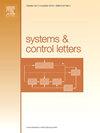Reinforcement-learning-based control framework for leader-following cascade formation of multiple perturbed surface vehicles
IF 2.1
3区 计算机科学
Q3 AUTOMATION & CONTROL SYSTEMS
引用次数: 0
Abstract
This article presents a novel reinforcement learning (RL)-based leader/follower cascade formation control framework for a fleet of perturbed surface vehicles (SVs), aiming to achieve accurate trajectory tracking while minimizing a predefined cost function to enhance system performance. The proposed distributed control structure explicitly accounts for both the dynamic and kinematic subsystems of each SV agent. It features a hierarchical control design, where the outer loop generates high-level desired trajectories for each vehicle, and the inner loop employs an actor/critic RL strategy to derive the optimal low-level control scheme. In contrast to conventional back-stepping-based formation control methods, this approach independently addresses the dynamic and kinematic subsystems of each SV agent, enabling a more modular and robust analysis. Rigorous stability proofs are provided to ensure that tracking errors and learning errors for both individual agents and the overall closed-loop control system are uniformly and ultimately bounded (UUB). To validate the effectiveness and practicality of the proposed strategy, simulation studies are conducted with a group of five SVs, demonstrating superior performance and feasibility in achieving robust formation control under perturbations.

求助全文
约1分钟内获得全文
求助全文
来源期刊

Systems & Control Letters
工程技术-运筹学与管理科学
CiteScore
4.60
自引率
3.80%
发文量
144
审稿时长
6 months
期刊介绍:
Founded in 1981 by two of the pre-eminent control theorists, Roger Brockett and Jan Willems, Systems & Control Letters is one of the leading journals in the field of control theory. The aim of the journal is to allow dissemination of relatively concise but highly original contributions whose high initial quality enables a relatively rapid review process. All aspects of the fields of systems and control are covered, especially mathematically-oriented and theoretical papers that have a clear relevance to engineering, physical and biological sciences, and even economics. Application-oriented papers with sophisticated and rigorous mathematical elements are also welcome.
 求助内容:
求助内容: 应助结果提醒方式:
应助结果提醒方式:


